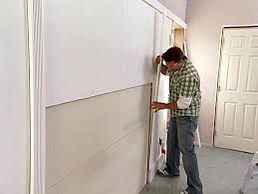 In today’s world, the environmental impact of traditional construction materials is becoming increasingly difficult to ignore. From high carbon footprints to significant waste production, the need for more sustainable alternatives has never been more urgent. Enter fiber-reinforced plastic (FRP) wall panels—a versatile and eco-friendly material that plays a key role in sustainable construction.
In today’s world, the environmental impact of traditional construction materials is becoming increasingly difficult to ignore. From high carbon footprints to significant waste production, the need for more sustainable alternatives has never been more urgent. Enter fiber-reinforced plastic (FRP) wall panels—a versatile and eco-friendly material that plays a key role in sustainable construction.
Understanding FRP Wall Panels
FRP wall panels, also known as FRP wall sheets, are composite materials made from a polymer matrix reinforced with fine glass fibers. These panels offer a unique combination of strength, durability, and lightweight properties, making them ideal for various applications, from commercial kitchens to industrial settings.
The unique composition of FRP wall panels includes a blend of fiberglass and resin, which provides excellent durability and resistance to moisture, chemicals, and impact.
Contributing to Green Building Certifications with FRP Wall Sheets
Recycling Process
One of the standout features of FRP wall panels is their recyclability. The recycling process involves grinding the panels into smaller particles, which can then be used as fillers for new composite materials. This supports waste reduction and contributes to a circular economy by reusing existing materials.
Energy Efficiency
FRP wall panels are excellent insulators, helping to maintain indoor temperatures and reduce energy consumption. Their low thermal conductivity means that buildings can stay warm in the winter and cool in the summer, leading to significant energy savings over time.
Longevity and Durability
The FRP panels’ resistance to moisture, chemicals, and impact means they require less frequent replacements compared to traditional materials like wood or drywall. This longevity reduces the overall environmental impact by minimizing the need for constant resource use and waste production.
Low Maintenance
FRP panels are easy to clean and resistant to mould and mildew, which means less frequent cleaning and fewer harsh chemicals. This not only saves time and resources but also aligns with sustainable building practices.
Thermal Resistance
The insulating properties of FRP panels contribute to improved energy efficiency. By reducing the need for heating and cooling, FRP panels can help achieve points in the LEED Energy & Atmosphere category.
Lower Material Cost
Despite their numerous benefits, FRP panels are often more cost-effective than traditional materials. Their lightweight nature reduces transportation costs, and their durability means lower long-term maintenance expenses.
Versatility and Adaptability
FRP panels are available in a variety of colours, textures, and finishes, offering flexibility in design. Whether you’re looking to create a modern office space or a durable industrial facility, FRP panels can adapt to your needs.
Non-Toxic Materials
Made from non-toxic materials, FRP panels are safer than other materials for occupants and do not emit harmful VOCs (volatile organic compounds). This makes them a healthier choice for indoor environments, contributing to overall well-being.
Moisture Resistance
The moisture-resistant properties of FRP panels make them ideal for areas prone to dampness, such as bathrooms and kitchens. This resistance helps prevent damage and extends the lifespan of the panels, further supporting sustainability.
Choose Canada Plastics and Belting for FRP Wall Panels in Toronto
FRP wall panels offer a multitude of benefits for sustainable construction, from their recyclability and energy efficiency to their contribution to green building certifications. By choosing FRP panels, architects, builders, and contractors can promote eco-friendly construction practices and create lasting, sustainable structures.
If you’re interested in learning more about how FRP panels can transform your construction projects, contact Canada Plastics and Belting Inc. for a free consultation. Our experts are here to help you choose the right FRP panels for your needs, ensuring a greener future for all.
